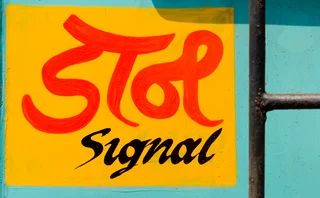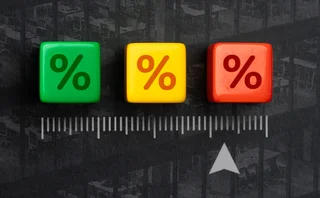
Replacement costs add to OTC pricing upheaval
Dealers do not often ask regulators to intervene in the derivatives markets, but faced with an insoluble pricing headache, and no way to defend themselves, they’re seeking help. And some clients are now asking whether the market has simply become too complex. By Matt Cameron

As dealers have slid down the ratings spectrum in recent years, options the industry gave away for free when in better health have become painfully relevant, forcing banks to confront the latest in a long line of post-crisis pricing challenges – the replacement valuation adjustment (RVA). It may be a challenge too far.
“They’re horrible,” says the head of rates trading at one large European bank. “We have no idea how to price them or manage the risk associated with them. All I know is that if we get downgraded to a certain point and our counterparties choose to exercise the option, we are going to lose a lot of money.”
The question is how much. The options, known as downgrade triggers, allow a client to terminate a trade when a counterparty hits a certain rating level and also force that party to pay for a replacement – but banks have no way of knowing how much a new dealer might charge to enter into the trade. As a rule of thumb, one trader that has replaced other banks says a downgraded dealer might be gouged for up to 10% of a trade’s net present value.
This, of course, is the law of the jungle – and traders generally do not cry about that. What makes downgrade triggers different is the systemic risk they could present in markets where they are common, and where trading is concentrated in the hands of a small number of banks – parts of the inflation swap market, for example. Dealers and clients alike worry the downgrade of a large player in this space, and subsequent mass termination of contracts, could overwhelm the market’s ability to replace the risk.
In this scenario, traders warn the 10% rule of thumb goes out of the window – losses could be many times larger than expected. Sweeping downgrades for dealers as a whole could have a similar effect – forcing affected banks to pay their stronger peers to take on trades at a time when nobody wants to trade at all.
We have no idea how to price them or manage the risk associated with them
As a result, dealers are doing two things they would normally walk over hot coals to avoid – some are turning away business, and others are calling on regulators for help.
“If regulators are serious about systemic risk, then they should seriously look at not allowing these triggers to exist,” says one head of interest rate structuring at a European bank in London. “Calculating an RVA number will be meaningless as any number computed will be too low and wrong. There is not a lot you can do about it, especially in one-way or closed markets. It is much better to just forbid portfolio rating triggers in derivatives contracts – especially in dynamic portfolios – as they are a blunt source of systemic risk.”
Tim Blake, head of fixed-income department portfolio management at Credit Suisse in New York, says the bank no longer writes new business containing downgrade triggers. “We made the decision that we wanted to stay away from that kind of business. The risks can be unacceptable,” he says. And Credit Suisse is not alone. One other, smaller European dealer says it has the same policy, while at least three other banks claim to have imposed strict limits on the number of swaps they will accept with downgrade triggers.
But that means walking away from some significant clients, or even whole markets – and some banks are not willing to do that. Special-purpose vehicles (SPVs) used in securitisations are required by rating agencies to incorporate the triggers in any swaps they transact and, as a rule, traders say UK pension funds with liability driven investment (LDI) strategies also insist on downgrade triggers (Risk May 2012, pages 16–20). In addition, whatever policy banks adopt for new trades, they still have their old transactions to deal with – and are holding no specific regulatory capital against this exposure.
A typical swap contract with a downgrade trigger is structured so the option to terminate the swap can be exercised by the non-affected counterparty – the counterparty not downgraded – in the event a bank’s credit rating falls below a certain threshold. Typically, the trade is closed out at current market value – in many cases a new dealer steps into the trade – but the downgraded counterparty is responsible for footing the termination cost of the swap (see box, 1992 versus 2002 Isda close-outs).
From a pricing point of view, banks can put together a model that will assign a probability to their own downgrade, but accurately estimating the potential losses they will incur as a result is like picking a number out of the air, adding to the over-the-counter market’s fast-growing complexity, which is already causing some clients to complain that even plain-vanilla swaps cannot be fully explained to board members (see box, The red queen’s race).
When calculating RVA, the first obstacle is that – even after a dealer has fallen through the trigger level – its counterparty has a choice about whether and when to exercise. In the context of generalised distress, it may decide to stay put, reasoning there is little to be gained by looking for a new counterparty, or that doing so may take too long. It is a possibility that is easy to describe and to understand, but is far more difficult to model, banks say (Risk September 2011, pages 94–96).
The second issue is that most dealers believe there is a strong correlation between the risk of a bank’s own downgrade and the downgrade of the rest of the Street. A counterparty may be less likely to exercise the trigger if dealer ratings are all slipping, but if it does so the bank will be paying for a replacement trade in stressed conditions, which is likely to significantly inflate the bid-offer spread.
On uncollateralised trades, dealers fear the replacement cost would be even bigger. The pool of willing counterparties for these swaps has shrunk since the crisis, because of the higher funding and capital charges involved, and this could be exacerbated in the event of widespread downgrades. For collateralised trades, modelling is harder still because each bank quoting will do so on the basis of its own credit support annex – the industry standard document governing bilateral collateral posting, which determines what discount rate should be used.
Finally, RVA should take into account the possibility that the new trade will also incorporate a downgrade trigger and that quoting banks may want to insulate themselves by charging an RVA premium, and that this premium needs to reflect the same fact, and so on, in a dizzying, never-ending cascade of downgrades and replacement charges, each of which would be determined by the same incalculable risks that are contained in the first.
The bottom line is that termination costs can be high, but there is no way of confidently putting a number on them – RVA resides in the land of informed guesses, ballpark figures and back-of-the-envelope calculations. It’s not the kind of thing a dealer is generally happy to quote to a client or explain to a risk manager.
“On a trade with a mark-to-market value of, say, $100 million, a general rule is that firms will take you for $5 million–10 million, just because they can. And we’ve seen this done. We have replaced people, it’s an opportunity to profit,” says one derivatives trader at a European bank.
It can be more painful than that, too. Peter Shapiro, managing director at independent swap adviser Swap Financial, which advises governments, government agencies and non-profit organisations, says he has advised on close-outs in which local US government entities were holding heavily out-of-the-money swaps and the banks were paying to step in as replacements often quoted at steep discounts.
“We’ve seen banks get taken out at between a 10% to 20% discount from the mid-market of the trade – and sometimes much larger. That is substantial on trades with large mark-to-markets,” he says.
“Downgrade triggers are the ultimate gun-to-the-head pricing mechanism,” says Credit Suisse’s Blake. “At the point you are downgraded, you are a wounded animal and everyone knows it – the termination costs will soar and you will be killed, stuffed and mounted.”
All these issues are magnified in illiquid, concentrated markets – and a number of traders point to the long-dated, LDI-driven inflation swap market in the UK as a prime example. The market is dominated by five or six players, they say, and triggers are a common feature of these trades – so, if one of the bigger houses is downgraded, all hell could break loose.
“Rating triggers are, by their nature, wrong-way risk and are hard to quantify. But even more problematic is when these triggers are being used in a space where the underlying product flow is systemic. All banks will be same way round and a trigger will then catapult the bid-offer to unknown but most likely extreme levels – even more so when liquidity and capacity is also a constraint. Inflation and exotics markets are exposed to this kind of risk. We think this is a source of systemic risk. It is being used and pushed by pension funds and we are trying to dissuade the community from relying on these triggers,” says Guido Hebert, global head of rates structuring at HSBC in London.
The UK inflation swap market is intensely competitive, with bid-offer spreads typically between 2 and 4 basis points, traders say. But in stressed market conditions, the spreads can get as wide as 10bp, according to a trader at a large LDI manager. For a £10 billion inflation swap portfolio with an average maturity of 20 years and a £20 million sensitivity to a 1bp change in inflation – known as IE01 – this means paying the full bid-offer spread (5bp from mid-market) would result in a cost of £100 million.
“This is a big problem. A large inflation player could easily have £50 million IE01 out to pension schemes. That is massive risk to replace. You’re talking about a couple of years’ worth of market flow and many years of interbank flow. So the bid-offer is one thing, but the fact that it would also take so long even to be able to trade it is also a huge factor, as the bank is exposed to market moves in the meantime,” says the trader.
Market participants use Royal Bank of Scotland (RBS) to highlight the concern. The UK bank is widely seen as the dominant player in UK LDI inflation swaps, with a market share that other market participants estimate at 40% or more. If RBS is downgraded and is unable to take remedial action, the potential termination costs could make life dramatically worse for the bank, and cause the market to dislocate.
“If that happens, the market will turn upside down, the bank will haemorrhage, and the market moves will be scary. Nobody wants that situation,” says one inflation derivatives trader at a European bank.
RBS declined to comment. The UK Treasury, which manages the UK government’s stake in the bank, failed to respond to requests for comment by press time.
So, what are regulators doing about the risks posed by downgrade triggers? On the face of it, not a lot – but the issue has not gone unnoticed.
In 2010, the Financial Stability Board (FSB) published high-level principles for reducing reliance on credit rating agency ratings, which stated that market participants should not use ratings of counterparties as automatic triggers for large, discrete collateral calls in margin agreements. According to a source close to the FSB, the board includes in this principle triggers related to termination costs too, and the issue is still on the agenda.
“It is something that needs to be explored more, but it is a challenging area, and how one eliminates the mechanistic reliance on credit ratings in a bilateral contract is inherently tricky. It’s not as simple as saying the triggers are banned, but it is something that will continue to be pursued, and other methods will be considered,” says the source.
Other regulators are also aware of the issues – Denmark’s Finanstilsynet, for example, says it is monitoring the use of downgrade triggers. Two other regulators say privately they are also aware of the risk posed by the triggers, but refuse to comment further.
Randall Kroszner, a former governor of the Federal Reserve System, and Norman R Bobins professor of economics at the University of Chicago’s Booth School of Business, believes downgrade triggers are systemically risky and should be a focus for regulators. “This was an issue I was concerned about when I was at the Fed. In principle, the contracts provide protection to the swap counterparty, which seems sensible. If the downgrades happen because of a system-wide event, however, these types of contracts can be destabilising, because all the major players can face simultaneous requirements to post extra collateral or to pay termination costs. This can result in a correlation of actions that can lead to fire-sales of assets and further downgrades. These contracts have the potential for negative systemic consequences, and regulators should be keeping a close eye on them,” he says.
Currently, the prudential framework only addresses some of the risks related to downgrade triggers. It does so through Basel III’s liquidity coverage ratio (LCR), which requires banks to hold enough highly liquid assets to cover expected outflows during a 30-day period of stress. Among the possible outflows, the LCR includes downgrade triggers embedded in financing transactions, derivatives and other contracts. Banks are expected to hold assets against outflows of collateral up to and including a three-notch downgrade, as well as early repayment of existing liabilities upon the bank’s downgrade by a recognised credit rating organisation.
This means the bank will be holding assets against collateral-posting liabilities, often incorporated in trades with SPVs at a higher rating level, so a downgrade beyond the first trigger forces a bigger collateral buffer to be provided while breaching the second triggers the replacement option. But this will not take into account the cost of terminating the trade.
There is no capital charge for these costs in the Basel capital framework. Nor do banks think there should be. “When it comes to unwinding or novating swaps, we go through typical trading steps and can end up trading above or below where we’ve marked the swap. I don’t think there is an argument to treat the swaps with downgrade triggers in a different way. However, to set capital aside for a potential mismatch between the novation price and the price it is booked at doesn’t really make sense, as otherwise you could argue there always is a risk, for any swap, that you’ll end up selling it at a price different from the one you marked it at due to market conditions. That is just profit and loss,” says the inflation trader at the European bank.
Other than not do the business, banks say the best way to protect themselves is to charge an RVA – which would insulate against loss while also discouraging counterparties from asking for downgrade triggers – and to cap the amount of these options they sell. But the bluntness of the estimate means many banks are unwilling to include a charge at all in case they end up as an outlier when competing for business.
“These are completely non-standard clauses. Banks will price them completely differently and some will not price them at all,” says Pedro Madeira, assistant treasurer at airport operator Heathrow Limited in London. “We have seen RVA on a seven-year cross-currency swap ranging from zero to over 40bp. Typically, those who price in the RVA and still intend to win trades will price RVA at around 5–15bp.”
Privately, banks say they are more likely to charge some kind of RVA for deals with SPVs because LDI business is so cut-throat. “It’s a highly competitive market – and if you’re the only one not willing to sign these agreements, you will lose business, and that is final,” says the head of interest rate trading at a European bank.
One LDI manager says he has never been charged an RVA in any of his swaps – but it’s not something he welcomes. “It just doesn’t happen, and I’m really surprised by that. These are real risks and I find it incredible that banks are allowed to not charge for it.”
Other LDI managers say getting rid of triggers may not be such a bad thing, as it is likely to improve the liquidity of swaps contracts and reduce systemic risk. “One aim of ours is to ensure we always have the best access to liquidity in our swaps portfolios and the presence of downgrade triggers makes the contracts less fungible – and therefore less liquid. If these were removed, the contracts could be much more fungible and easier to novate to another bank. We would potentially be able to manage the credit risk using other measures such as receiving independent amount,” says Simon Wilkinson, head of LDI funds at Legal & General Investment Management in London.
Other pension funds admit that if banks all started charging an RVA, they might abandon the triggers. Until that consensus emerges, though, dealers face a simple choice – tack on some kind of approximation and risk losing business, ignore it and risk losing money, or simply sit on the sidelines.
“If banks were to all start charging, I’m pretty sure we wouldn’t trade with these triggers, but they are still willing to give. Yes, sometimes it’s a bit of a bun fight, but as long as banks are willing to trade with them, our clients are going to opt for them – who wouldn’t? They’re still a free option,” says another derivatives trader at a large fund manager.

1992 versus 2002 Isda close-outs
The determination of the close-out amount for an additional termination event (ATE) – the clause that includes downgrade triggers – runs in similar fashion to an event of default under the International Swaps and Derivatives Association master agreement, but differs depending on which version of the agreement is used.
When there is an event of default, the non-defaulting counterparty typically controls the close-out process. Similarly, if an ATE based on a credit rating downgrade is exercised, the non-affected counterparty – the party that has not been downgraded – will run the process. “The non-affected party will be the one with the responsibility to calculate the close-out amount. The affected party doesn’t have any control over the process because it is in effect their default. To all intents and purposes, the process for closing out is the same as a default and the party that is not affected can treat it as an event of default,” says Allan Yip, partner at law firm Simmons & Simmons in London.
Under the 1992 master agreement, there are two methods for determining the close-out amount the non-affected counterparty can elect to use: market quotation and loss. Under the market quotation method, the non-affected party is required to solicit four firm quotes from recognised reference market-makers. If the non-affected party receives four quotes, it should knock off the highest and lowest, and average the middle two. If it receives three quotes, it should use the middle quote. The quotes should incorporate the full bid-offer spread, because the close-out amount is supposed to reflect what would be paid for a replacement transaction.
If the non-affected counterparty fails to obtain at least three quotes, it must revert to the loss method. This means the non-affected party is able to calculate the close-out on a subjective basis using a variety of different inputs including market quotes, internal models and indicative broker quotes.
Under the 2002 Isda master agreement, the process was revamped, and there is only a single valuation mechanism a non-affected counterparty can elect – the close-out amount. Under the approach, the determining party may consider either firm or indicative market quotations, which may take into account the creditworthiness of the determining party, and the terms of any relevant documentation, including credit support documentation between the determining party and the third party providing the quotation; information comprising relevant market data supplied by one or more third parties; and information from internal sources.
The red queen's race
At one point in Lewis Carroll’s hallucinatory stories about the adventures of an English schoolgirl, Alice, the bemused heroine finds herself running on the spot, but going nowhere. She is advised by a chess piece: “My dear, here we must run as fast as we can, just to stay in place. And if you wish to go anywhere you must run twice as fast as that.”
Dealers find themselves in a similar situation. As happened to Alice, derivatives pricing has fallen down the rabbit hole – old certainties have been replaced by melting contradictions, and the industry now has to run just to stay in place.
“We sometimes joke that we have taken one of the simplest pricing concepts around – calculating the value of a swap by present valuing its future cashflows – and turned it into one of the most complicated pricing endeavours one could possibly find,” says a credit portfolio manager at one US bank.
The cause is the host of valuation adjustments that have become increasingly important in the post-crisis years. Where dealers used to price credit in an ad hoc way, ignoring funding costs because it was assumed that all banks could borrow near the risk-free rate, the biggest banks now have to focus vast resources on credit valuation adjustments (CVAs), funding valuation adjustments (FVAs), debit valuation adjustments and even cheapest-to-deliver valuation adjustments, in an effort to precisely quantify each and every pricing element of a trade (see pages 22–24).
Dealers say this is all necessary – they would be doing their shareholders a disservice if they were to ignore them. But the new-found complexity, allied with big disparities in approach from bank to bank, leaves customers struggling to understand and compare prices. It begs the question: is the quest for pricing perfection hurting the market?
“It has become extremely difficult to get to grips with banks’ pricing methodologies. No banks price these things the same – they all use the same terms but there is an appalling lack of standardisation among the methodologies. As a result, our job has certainly become harder,” says Pedro Madeira, London-based assistant treasurer at airport operator Heathrow Limited.
As banks have begun to incorporate credit and funding charges into swaps prices, so bid-offer spreads have exploded, especially in long-dated uncollateralised swaps, forcing corporates to engage with these complexities if they want to understand how to get a better deal.
But because of the lack of standardisation, some valuation adjustments – especially FVA – are proving a maze to navigate, even for sophisticated end-users. “The funding component is easy to get to grips with in theory, but the actual implementation is so diverse, that to compare prices across different banks becomes very difficult. How they come up with their funding curves is not standard. It’s very hard to get a handle on,” says Lars Eibeholm, treasurer of the Nordic Investment Bank in Helsinki.
The result is that it has become harder than ever to explain hedging costs to management and board members, says Heathrow’s Madeira. “It does make certain transactions much harder to explain internally. It is almost impossible, and that is a bad thing, because a portion of senior management has to accept the costs of these swaps without fully understanding how they are worked out,” he says.
As a result, some end-users are turning to advisers for help. “Companies that have frequent hedging programmes are usually able to get a grip on the pricing, as they deal with it on a daily basis. But many of our clients that do intermittent hedging or infrequent large deals are not going to know whether CVA or FVA is being charged or how the composition of the price has been achieved. It can be very difficult for these counterparties,” says Finula Cilliers, director of derivatives and hedging advisory at Rothschilds in London.
It’s not easy to know what the alternative is. Perhaps, in an ideal world, banks would agree on a standard approach to the newer elements of the pricing process – such as the choice of funding rate when calculating FVA, or the appropriate discounting curve to use when a counterparty has the option to post different types of collateral (Risk April 2013, pages 14–18). Consensus may emerge in time, but it feels a long way off to many market participants.
Still, dealers say there are no short cuts – and they insist the banks now have a better grasp of risk over the full life of derivatives trades. Pre-crisis, banks neglecting funding costs may have put on long-dated trades they thought looked profitable, only to realise years later the trades had in fact cost them dearly from a funding perspective, for example. The complexity is unfortunate but unavoidable, they say.
“The funding crisis taught market participants to focus on those issues and the industry is now more intelligent, thoughtful, focused and precise in that regard. Getting smarter about how to price and risk-manage funding is a rational response and in the best interest of the market, because pricing any risk appropriately helps encourage rational behaviour – and therefore helps reduce systemic risk,” says one head of product valuation at a US bank in New York.
But dealers also argue that while the adjustments are very complex, most end-users don’t need to understand each and every factor that goes into the pricing model – a basic grasp of the theory behind the different pricing components will suffice.
And some end-users tend to agree. “The reality is many of these pricing concepts have been around for years, and if someone can’t understand the principles behind these swaps, they shouldn’t be trading in the first place. But while the price is important, the actual nuts and bolts of the calculations of each individual element are not very relevant to the end-user,” says the head of one European sovereign debt management office.
Only users who have a paid subscription or are part of a corporate subscription are able to print or copy content.
To access these options, along with all other subscription benefits, please contact info@risk.net or view our subscription options here: http://subscriptions.risk.net/subscribe
You are currently unable to print this content. Please contact info@risk.net to find out more.
You are currently unable to copy this content. Please contact info@risk.net to find out more.
Copyright Infopro Digital Limited. All rights reserved.
As outlined in our terms and conditions, https://www.infopro-digital.com/terms-and-conditions/subscriptions/ (point 2.4), printing is limited to a single copy.
If you would like to purchase additional rights please email info@risk.net
Copyright Infopro Digital Limited. All rights reserved.
You may share this content using our article tools. As outlined in our terms and conditions, https://www.infopro-digital.com/terms-and-conditions/subscriptions/ (clause 2.4), an Authorised User may only make one copy of the materials for their own personal use. You must also comply with the restrictions in clause 2.5.
If you would like to purchase additional rights please email info@risk.net
More on Markets
Basis swaps surge amid US repo concerns
Fed funds-versus-SOFR swap volumes nearly quadruple as declining Fed reserves impact funding rates
India delays initial margin go-live date
RBI communicated putting off initial margin rules one day before planned November 8 implementation
Clearing bottlenecks blamed for muted volumes at FMX
Regulatory hurdles and market conditions have also hampered CME rival since its September launch
JPM sees upside in blurring lines between QIS and SMAs
Hedge funds are combining their strategies with bank indexes to create new products
Hedge funds take profit on vol trades with Trump win
FX volatility drops sharply as positions unwind; rates market sees mixed reaction
Shanghai Clearing House urged to take bond collateral for FX trades
Dealers complain that feeble interest rate paid on cash margin raises cost of clearing
BofA’s e-FX rebuild pulls it closer to rivals
Deploying its equities tech stack, bank seeks to get ahead of the pack with algo and e-FX offerings
Corporates look to tackle unhedgeable inflation indexes
As inflation risks mount for corporates, some are finding their exposures are linked to niche indexes







